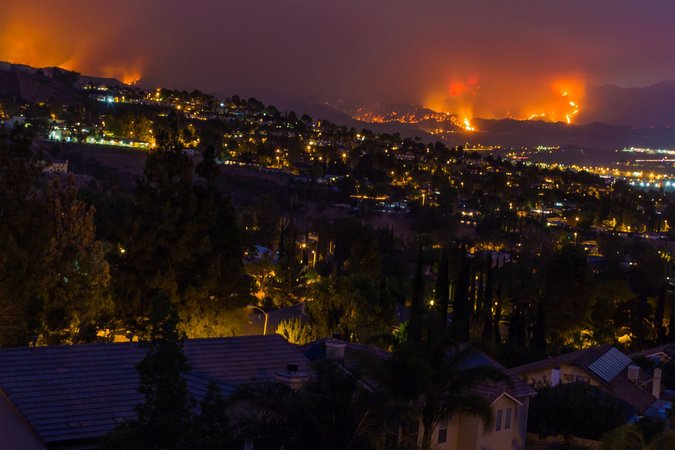In California, Homes That Disclose High Wildfire Risk Sell for Less
Between 2015 and 2022, California homes sold for 4.3 percent less if required to disclose high wildfire risk, a new working paper finds.
💡 What’s the story?
Between 2015 and 2022, California homes sold for 4.3 percent less if required to disclose high wildfire risk, a new working paper finds. The price effect was strongest in southern California and most apparent in 2020 and 2021—years that followed several large and damaging wildfires in the state.
The findings, published by a team from Resources for the Future (RFF) and the University of Kentucky, add to a small-but-growing collection of research about how home prices internalize the risks of climate change. The research also reinforces a growing call for more and better disclosure of climate and disaster risks.
Author Perspective
“Each year, more and more people move into the wildland urban interface—an area that, despite its beauty and relative affordability, is increasingly at risk of catastrophic wildfire damage. It’s important that these risks are part of the cost equation. Our research shows that homebuyers are less willing to pay for homes that they know are at particularly high risk of wildfire—‘know’ being the operative word here.”
—Margaret Walls, Senior Fellow and Director of RFF’s Climate Risks and Resilience Program
🔍 How do we know?
California law has different wildfire risk disclosure requirements based on the severity of the risk and who is responsible for fire management: the state or locality. Using data from Zillow, and homing in on these differences in risk disclosure, the research team analyzed almost 1.6 million single-family home transactions that took place less than 1,000 feet from the regulatory disclosure boundaries.
By analyzing how homes in similar locations—but with different requirements—accounted for similarly high wildfire risk, the authors could see how this one parameter, disclosure of risk, affected prices.
The authors worked to reduce factors that could have muddled the data. For example, they focused their analysis on properties built before 2008, when jurisdictions with wildfire disclosure requirements updated building codes for all new homes—a factor that could have skewed price points. They also accounted for other price influences such as home and neighborhood characteristics.
🏘️ How do these disclosures affect homebuyers and communities?
Homebuyers are willing to pay less for homes that they know are at high risk of wildfires. The authors estimate that between 2015 and 2022, Californians who bought homes in places with disclosed high wildfire hazard were willing to pay, on average, $21,500 less than for similar homes in places that did not require disclosure.
The findings highlight how buyers adjust their behavior when aware of certain risks. As more homes are built in California’s wildland urban interface, understanding how disclosure requirements come into play will be a vital part of ensuring communities are properly accounting for and aware of the impacts of climate change.
Author Perspective
“Researchers are still working to unravel how homebuyers incorporate wildfire risks into their decisionmaking—our new findings untangle just one knot of this complex picture. What can be done to make sure more homebuyers are aware of risks so they can make informed choices? And beyond that, what about homebuyers in flood- or hurricane-prone areas? There are still many questions to answer.”
—Matthew Wibbenmeyer, RFF Fellow
📚 Where can I learn more?
A related blog post, “Disclosing Wildfire Risks in Home Sales,” details the findings and the broader context of wildfire risk disclosure.
For more, read the working paper, “Risk Disclosure and Home Prices: Evidence from California Wildfire Hazard Zones,” by Lala Ma, an associate professor at the University of Kentucky; Margaret Walls, a senior fellow at RFF; Matthew Wibbenmeyer, a fellow at RFF; and Connor Lennon, a former RFF intern.
Resources for the Future (RFF) is an independent, nonprofit research institution in Washington, DC. Its mission is to improve environmental, energy, and natural resource decisions through impartial economic research and policy engagement. RFF is committed to being the most widely trusted source of research insights and policy solutions leading to a healthy environment and a thriving economy.
Unless otherwise stated, the views expressed here are those of the individual authors and may differ from those of other RFF experts, its officers, or its directors. RFF does not take positions on specific legislative proposals.
For more information, please see our media resources page or contact Media Relations and Communications Manager Annie Tastet.





